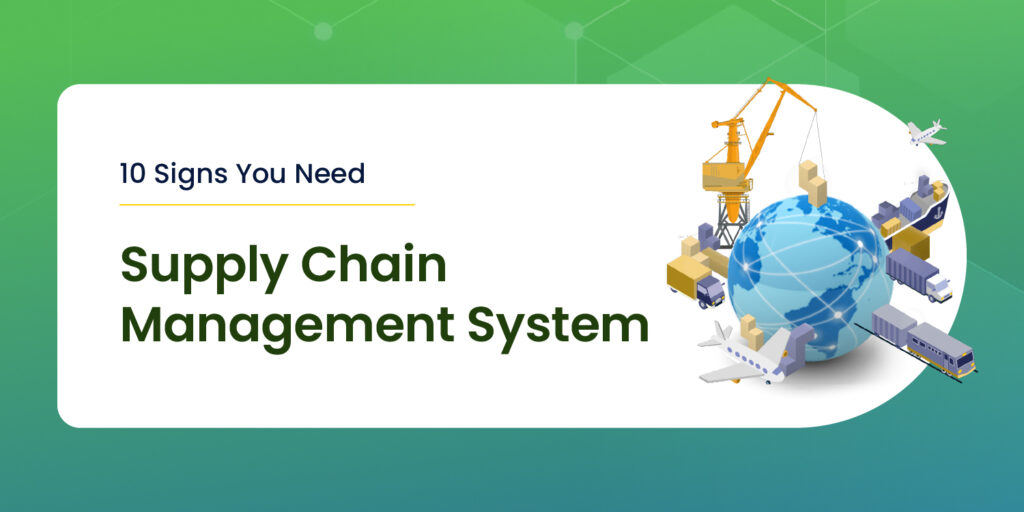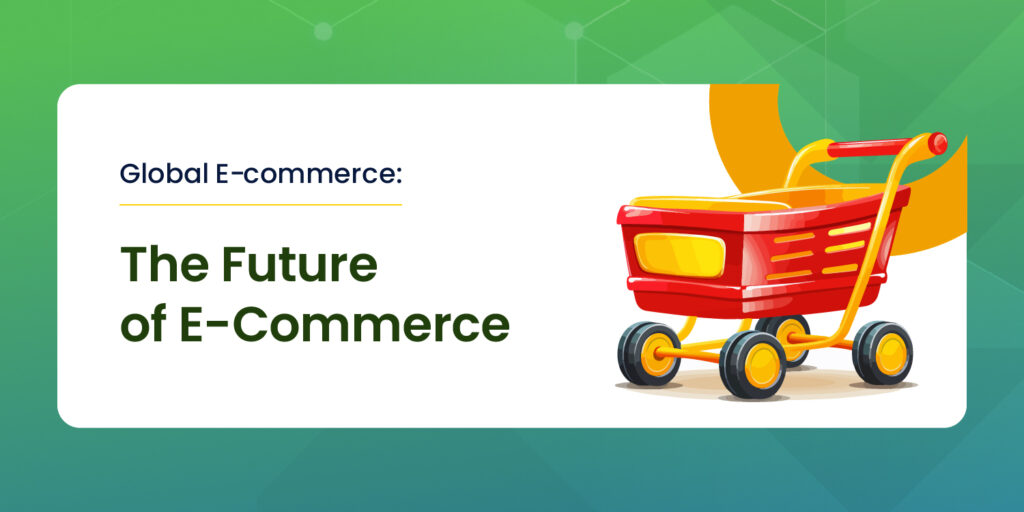
If you run a business that involves manufacturing products, distributing goods, or managing inventory and logistics, you’ve likely heard about a supply chain management system. But you may be wondering if your company really needs one. After all, implementing new software and processes can be a big investment of time and money.
However, having an effective supply chain management system in place can provide huge benefits by increasing efficiency, reducing costs, and giving you better visibility and control over your supply chain operations.
In this blog post, we’ll cover 10 signs that indicate your business could really use a dedicated supply chain management solution. If several of these points resonate with the current state of your operations, it may be time to start exploring supply chain software options.
One of the biggest red flags that you need a supply chain management system is if your team is still tracking and managing core supply chain processes using manual methods like paper records and spreadsheets. While spreadsheets can work for very small and simple operations, they quickly become inefficient, unreliable, and unscalable as transaction volumes increase.
With manual processes, there’s a much higher chance of human errors creeping in when dealing with the huge amounts of data involved in supply chain management. Spreadsheets can easily get outdated or have conflicting information between different versions. You lose real-time visibility into inventory levels, order statuses, supplier performance metrics, and other crucial data streams.
A centralized supply chain management platform automates the flow of information throughout your supply chain and provides a single source of truth for all relevant data and analytics. This increased supply chain visibility helps you make smarter, data-driven decisions to optimize operations.
If you frequently experience stockouts of key products and materials, or find yourself getting stuck with excess unsold inventory, these are telltale signs of supply chain inefficiencies that a management system could help resolve.
With better demand forecasting and inventory optimization capabilities in a supply chain management solution, you can more accurately predict future sales and customer demand. This allows you to hold the right amount of inventory to meet demand without excessive overstocking or understocking.
These solutions can account for seasonal demand fluctuations, sales promotions, and other factors that influence inventory needs. You gain the ability to automatically generate purchase orders and restock replenishment orders when inventory levels get low.
If stockouts are a common occurrence, your company is likely spending a lot of money on expedited shipping or air freight to rush replenishment orders through your supply chain to meet customer demand. These emergency logistics expenses can quickly eat into your profit margins.
On the flip side, having too much excess inventory drives up your overhead carrying costs for storage space, inventory labor, and other associated expenses. It also increases the risk of stock becoming obsolete before it can be sold.
With better supply and demand matching enabled by a supply chain management system, you can avoid both costly stockouts and excess overstocking that drains your bottom line.
Having the right suppliers at the right costs is crucial for managing a cost-effective supply chain. But vetting new suppliers and managing relationships with existing ones is often a very manual, ad-hoc process for companies without a supply chain management system.
These solutions typically include supplier management tools that allow you to easily source and evaluate potential new vendors based on criteria like pricing, quality ratings, location, minimum order quantities, and compliance certifications. You can streamline procurement by automatically generating requests for pricing and gathering quotes from a pre-approved supplier network.
Supply chain management software also gives you more visibility into supplier performance metrics like on-time delivery rates, defect rates, responsiveness, and more. This data intelligence allows you to objectively evaluate current suppliers and determine which ones may need to be replaced.
If your customers are constantly calling to complain about missed deliveries or late shipments, that’s a clear indicator that you’re lacking sufficient transportation visibility and management within your supply chain. These issues can severely damage your brand reputation and customer loyalty over time.
Many supply chain management platforms include transportation management system (TMS) capabilities that allow you to efficiently plan, execute, and analyze deliveries across your supplier and customer networks. You can optimize routes and modes of transport based on factors like costs, transit times, sustainability requirements, and more.
With real-time tracking visibility into shipment locations and status, you can proactively communicate updates to customers and be alerted to any delays or disruptions that require mitigation steps. Automated freight auditing ensures you are correctly billed by carriers based on negotiated rates.
When asked about the total true costs to manufacture and deliver your products, can you quickly and accurately calculate the accumulative sum? Or do you find yourself guessing or underestimating with limited visibility into all of the intertwined variables?
From raw material costs, to production and labor overhead, import duties and taxes, transportation expenses, and more — there are numerous cost components that get baked into the final “landed cost” of finished goods and inventory. Not having tight controls and full transparency into these costs can lead to unprofitable pricing strategies.
Comprehensive supply chain management software is designed to capture and synthesize all of these different cost data streams across your end-to-end supply chain. The systems give you much-needed costing insights to ensure your pricing is correctly aligned with your profit targets and market positioning.
Armed with this level of granular cost data, you can identify areas for streamlining inefficiencies and negotiating better supplier/carrier rates. You’ll have the intelligence required to make any needed pricing adjustments or implement cost-saving measures.
Speaking of visibility, does your team have a clear real-time “view” of what’s going on across your multi-tier supply chain? Do you know where your products and materials physically are at any given moment as they travel through distribution pathways to you and your customers?
For most companies relying on archaic systems and processes, the answer is generally “no”. They have to scramble to collect and consolidate fragmented data from multiple sources like supplier emails, carrier tracking websites, inventory clerks, etc. By the time this data is compiled into reports, the information is likely outdated already.
Modern supply chain management platforms establish a constant stream of real-time data flow by integrating with suppliers, manufacturers, warehouses, transportation carriers, and other supply chain nodes. You get a unified control tower with full end-to-end visibility of inventory levels, purchase orders, shipments, and more.
If your business is growing rapidly or has seasonal spikes in order volumes and inventory needs, inefficient supply chain processes can easily become a major bottleneck that stunts your growth and scalability.
Manual methods for purchasing, production planning, warehouse management, logistics coordination, etc. simply cannot keep up with the pace and complexity of a high-growth business. Spreadsheets constantly need updating and human labor can only move so quickly.
Cloud-based supply chain management systems are designed to be endlessly scalable to handle increases in data volumes, transaction frequencies, and supply chain complexities. The software automates routine tasks and optimizes processes to run at maximum efficiency regardless of operating scale.
Instead of hiring more people and investing in manual labor Band-Aids, a supply chain management system allows you to scale operations by optimizing technology, integration, and data coordination.
Depending on your industry and locations of operation, your supply chain may be subject to various compliance regulations regarding product quality, safety, ethical labor practices, export/import controls, sustainability standards, and more. In many cases, failure to adhere can result in costly fines, legal issues, embargoes, and damage to your brand reputation.
It’s extremely challenging to effectively manage compliance and quality assurance across a multi-tier global supply chain using manual processes and disconnected systems. You need a centralized software platform that provides full traceability and transparency across your entire supply chain with robust audit trail capabilities.
Supply chain management solutions allow you to set and enforce compliance controls for product quality checks, vendor certifications, authorized manufacturing locations, acceptable shipping routes, and more. You can easily generate compliance reporting as needed.
Ultimately, your supply chain should be a source of competitive advantage and control lever for driving business performance — not just a necessary operational overhead expense. But you can’t take a strategic approach to optimizing and adapting your supply chain without quality data and analytics.
Supply chain management systems capture data streams across all of your procurement, logistics, compliance, customer management, and other processes. This raw data is synthesized into visual dashboards and analytics with reporting tools to monitor key performance indicators (KPIs), identify inefficiencies, and uncover opportunities for improvement.
Rather than operating based on hunches and rough approximations, supply chain service providers can apply data-driven decision-making to achieve incremental gains in areas like cost savings, on-time delivery metrics, sustainability goals, inventory optimization, and other priority areras.

What We Do
Company
Resources
Careline:+1 (917) 5957762
© 2025 Assiduus Global INC. All Rights Reserved.



